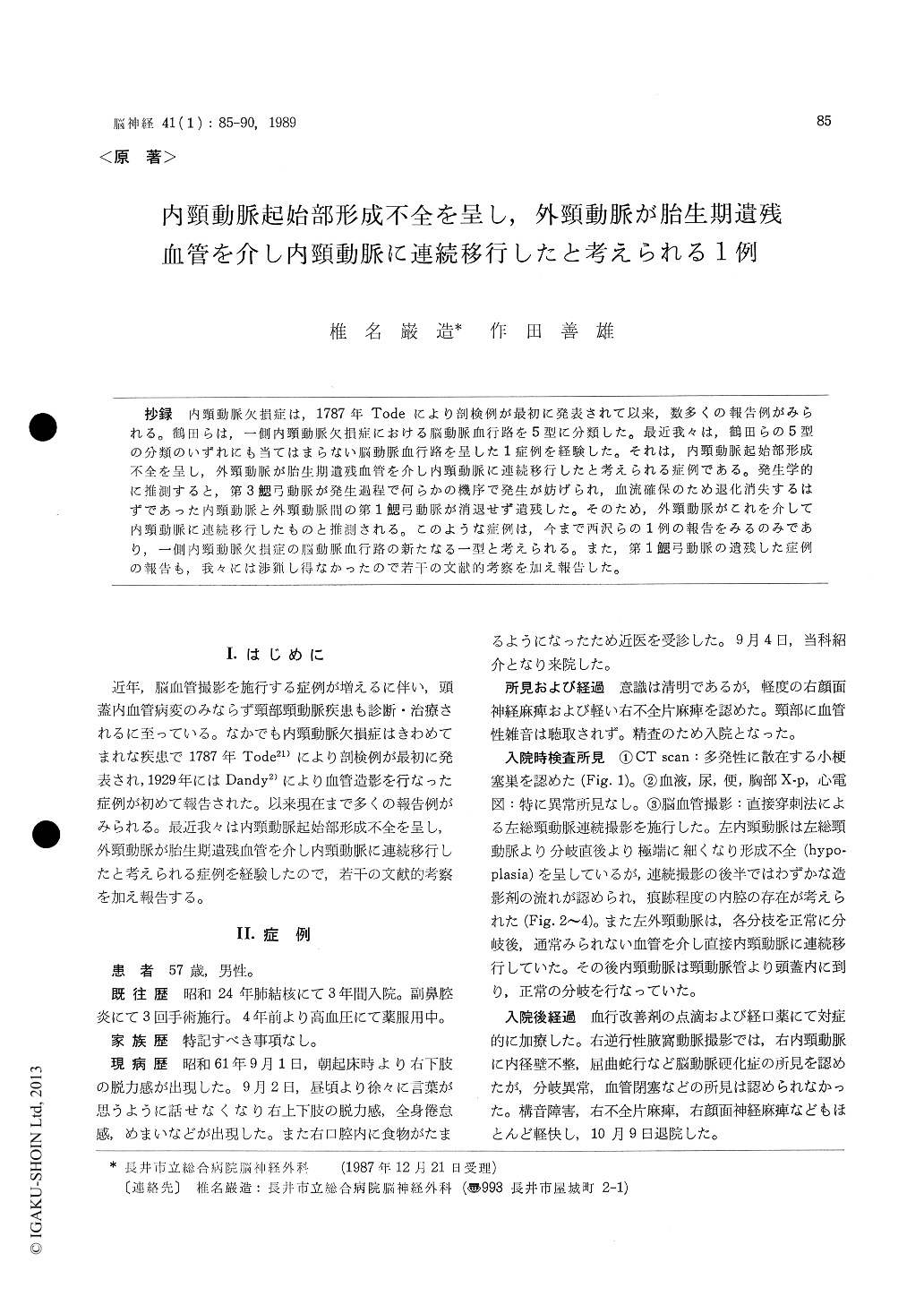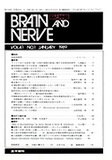Japanese
English
- 有料閲覧
- Abstract 文献概要
- 1ページ目 Look Inside
抄録 内頸動脈欠損症は,1787年Todeにより剖検例が最初に発表されて以来,数多くの報告例がみられる。鶴田らは,一側内頸動脈欠損症における脳動脈血行路を5型に分類した。最近我々は,鶴田らの5型の分類のいずれにも当てはまらない脳動脈血行路を呈した1症例を経験した。それは,内頸動脈起始部形成不全を呈し,外頸動脈が胎生期遺残血管を介し内頸動脈に連続移行したと考えられる症例である。発生学的に推測すると,第3鰓弓動脈が発生過程で何らかの機序で発生が妨げられ,血流確保のため退化消失するはずであった内頸動脈と外頸動脈閥の第1鰓弓動脈が消退せず遺残した。そのため,外頸動脈がこれを介して内頸動脈に連続移行したものと推測される。このような症例は,今まで西沢らの1例の報告をみるのみであり,一側内頸動脈欠損症の脳動脈血行路の新たなる一型と考えられる。また,第1鰓弓動脈の遺残した症例の報告も,我々には渉猟し得なかったので若干の文献的考察を加え報告した。
The internal carotid artery is one of the most stable arteries and its absence is very rare.
We reported a case of hypoplasia of the root portion and the intermediate portion of the left internal carotid artery associated with an usual primitive collateral circulation between the left internal carotid artey and the left external carotid artery.
A 57-year-old male developed right hemiparesis of sudden onset 3 days prior to admission.
On admission, right hemiparesis and right mi-nimal facial palsy was observed. The left direct carotid angiogram revealed that the root portion and the intermediate portion of the left internal carotid artery were hypoplastic.
There was an unusual primitive collateral cir-culation between the left internal carotid artery and the left external carotid artery.
From an embryological point of view, normally, the internal carotid artery is derived from the third aortic arch and the dorsal aorta when the embryo is attained the 3-mm stage. The root por-tion of the internal carotid artery is formed from the third aortic arch.
The dorsal aorta between the third and the first aortic arch form the intermediate portion. The distal part of the internal carotid artery originates from the dorsal end of the first aortic arch. The common carotid artery begins to form in the 12-mm to 14-mm embryo, following involution of portion of the ventral aortic root between the third and the fourth aortic arch. The external carotid artery arises from the aortic sac and migrate up to the third aortic arch. The portion of the third aortic arch proximal to the origin of the external carotid artery becomes the common ca-rotid artery.
In our case, the root portion and the interme-diate portion of the left internal carotid artery are hypoplastic by carotid angiogram.
From an embryological point of view, it is speculated that the third aortic arch might have been maldeveloped and the distal portion of the dorsal aorta might have received a primitive collateral circulation via the persistent first aortic arch.
The aberrant internal carotid artery is estimated as a very rare congenital anomalous condition. It seems to be a considerable interest that in this case such a congenital anomalous condition could have been associated with the persistent first aortic arch.
It seems that this report is the second case ofthe persistent first aortic arch.

Copyright © 1989, Igaku-Shoin Ltd. All rights reserved.


